
Sincelejo: A Hidden Gem in Colombia's Caribbean Region
Discover Sincelejo, Colombia's vibrant Caribbean city with rich traditions, lively markets, and stunning nearby natural attractions. Perfect for cultural and eco-tourism enthusiasts.
Sincelejo, the capital of the Sucre department, is a vibrant city with a rich cultural heritage and a warm, welcoming atmosphere. Nestled in the Caribbean region of Colombia, it offers a delightful blend of history, tradition, and modernity. Visitors will be captivated by its colorful streets, friendly locals, and a variety of attractions that make it a unique travel destination. One of the main attractions in Sincelejo is its lively central market, where you can experience the local culture firsthand. The market is filled with fresh produce, artisanal crafts, and traditional foods that will tantalize your taste buds. Don’t miss the chance to try 'mote de queso,' a regional soup made with cheese and yam, which is a beloved local specialty. Sincelejo is also known for its vibrant festivals, particularly the Fiestas del 20 de Enero, which celebrates the city's rich history and traditions. During this time, the city comes alive with music, dance, and parades. It's an excellent opportunity to witness the joyous spirit of the locals and partake in the festivities. Nature lovers will appreciate the nearby natural attractions, such as the Ciénaga de la Caimanera, a beautiful swamp area that is perfect for bird watching and eco-tourism. Additionally, the town of Tolú, just a short drive away, offers stunning beaches and crystal-clear waters, making it an ideal spot for a day trip. Whether you're looking to immerse yourself in local culture, enjoy vibrant festivals, or explore natural beauty, Sincelejo has something to offer every traveler. Its charm lies in its authenticity and the genuine warmth of its people, making it a memorable destination in Colombia.
Local tips in Sincelejo
- Visit the central market early in the morning for the freshest produce and best selection of local crafts.
- If traveling in January, don't miss the Fiestas del 20 de Enero for an unforgettable cultural experience.
- Take a day trip to Tolú for beautiful beaches and water activities.
- Bring comfortable walking shoes as the city is best explored on foot.
- Learn a few basic Spanish phrases; while many locals are friendly, not everyone speaks English.
Sincelejo: A Hidden Gem in Colombia's Caribbean Region
Sincelejo, the capital of the Sucre department, is a vibrant city with a rich cultural heritage and a warm, welcoming atmosphere. Nestled in the Caribbean region of Colombia, it offers a delightful blend of history, tradition, and modernity. Visitors will be captivated by its colorful streets, friendly locals, and a variety of attractions that make it a unique travel destination. One of the main attractions in Sincelejo is its lively central market, where you can experience the local culture firsthand. The market is filled with fresh produce, artisanal crafts, and traditional foods that will tantalize your taste buds. Don’t miss the chance to try 'mote de queso,' a regional soup made with cheese and yam, which is a beloved local specialty. Sincelejo is also known for its vibrant festivals, particularly the Fiestas del 20 de Enero, which celebrates the city's rich history and traditions. During this time, the city comes alive with music, dance, and parades. It's an excellent opportunity to witness the joyous spirit of the locals and partake in the festivities. Nature lovers will appreciate the nearby natural attractions, such as the Ciénaga de la Caimanera, a beautiful swamp area that is perfect for bird watching and eco-tourism. Additionally, the town of Tolú, just a short drive away, offers stunning beaches and crystal-clear waters, making it an ideal spot for a day trip. Whether you're looking to immerse yourself in local culture, enjoy vibrant festivals, or explore natural beauty, Sincelejo has something to offer every traveler. Its charm lies in its authenticity and the genuine warmth of its people, making it a memorable destination in Colombia.
When is the best time to go to Sincelejo?
Iconic landmarks you can’t miss
Guacarí Parque Comercial
Discover Guacarí Parque Comercial, a vibrant shopping mall in Sincelejo, Colombia, offering diverse shopping, dining, and entertainment options.

Plaza de Majagual
Explore the vibrant beauty and cultural richness of Plaza de Majagual, a lush park in Sincelejo, Sucre, perfect for relaxation and local experiences.

Santander Park
Experience tranquility and culture at Santander Park, a lush green oasis in the heart of Sincelejo, perfect for relaxation and local events.

St. Francis of Asis Cathedral
Discover the stunning St. Francis of Asis Cathedral in Sincelejo, a captivating blend of architectural beauty and rich cultural heritage.

Hotel Arawak Plaza
Hotel Arawak Plaza: Your Comfortable Haven in the Heart of Sincelejo, Perfect for Exploring the Rich Culture of Sucre.

Teatro Municipal
Discover the cultural heart of Sincelejo at Teatro Municipal, a premier destination for performing arts and vibrant artistic events.

Monumento La iguana
Discover the cultural essence of Sincelejo at Monumento La Iguana, a stunning landmark symbolizing local pride and heritage.

Monumento a las Vacas
Explore the Monumento a las Vacas in Sincelejo, Colombia - a stunning sculpture celebrating local cattle farming and cultural heritage.

Paintball sincelejo
Experience the thrill of paintball in Sincelejo, Colombia, where adventure meets camaraderie in an exciting outdoor setting.
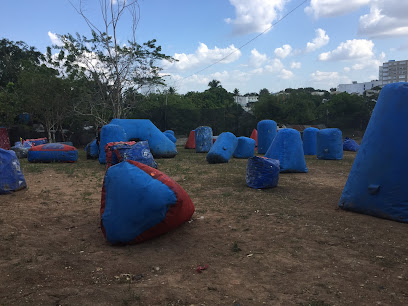
Monumento a la Flor del Bonche
Discover the vibrant spirit of Sincelejo at the Monumento a la Flor del Bonche, a stunning tribute to local culture and floral festivals.

Museum Manuel Huertas
Explore the fascinating history and vibrant culture of Colombia at Museum Manuel Huertas in Sincelejo, a must-visit destination for travelers.

Sincelejo-Sucre
Explore Sincelejo, Sucre: A vibrant Colombian city rich in culture, delicious cuisine, and lively festivals that showcase its unique heritage.

Galeria de Arte Walther Arrubla
Explore local artistry at Galeria de Arte Walther Arrubla, a captivating picture frame shop and gallery in Sincelejo, Sucre, that showcases regional talent.

Ciudad del Encuentro
Explore Ciudad del Encuentro in Sincelejo, Sucre, a powerful memorial dedicated to the values of unity, peace, and reflection in a tranquil setting.

Sincelejo Sucre colombia
Experience the vibrant culture, rich history, and culinary delights in the heart of Sincelejo, Sucre, Colombia.

Unmissable attractions to see
Plaza de Majagual
Discover the heart of Sincelejo at Plaza de Majagual, a vibrant park where culture, relaxation, and local flavors come together beautifully.

Santander Park
Explore the tranquil beauty of Santander Park in Sincelejo, Colombia, a perfect destination for relaxation, family fun, and cultural experiences.

Pozo Majagual Park
Explore the serene landscapes and vibrant flora of Pozo Majagual Park in Sincelejo, a perfect retreat for nature lovers and peace seekers.
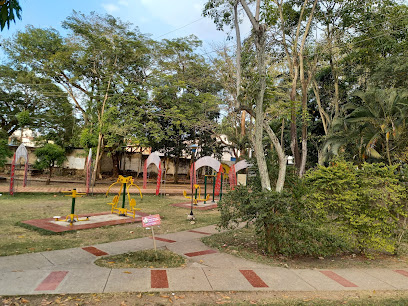
Teatro Municipal
Discover the heart of Colombian culture at Teatro Municipal in Sincelejo, a premier venue for the performing arts and local artistry.

Museum Manuel Huertas
Explore the vibrant cultural heritage of Sucre at Museum Manuel Huertas, a must-visit destination for art and history enthusiasts in Colombia.

Museo Universitario Finzenú
Discover Sucre's vibrant history and culture at Museo Universitario Finzenú – a must-visit for every traveler exploring Sincelejo.

Essential places to dine
Llanera La 31
Experience authentic Colombian flavors at Llanera La 31 in Sincelejo – where every meal tells a story.

Rancho Grande
Experience authentic Colombian flavors at Rancho Grande in Sincelejo - where every meal tells a story.

Qvo Vadis
Discover authentic Colombian cuisine at Qvo Vadis in Sincelejo - where tradition meets taste in a warm and inviting setting.

Javier Restaurante
Experience authentic Colombian cuisine at Javier Restaurante in Sincelejo – where every dish tells a story of tradition and flavor.

Restaurante Arcanos
Experience the exquisite flavors of Colombian cuisine at Restaurante Arcanos in Sincelejo - a must-visit for food enthusiasts.

Waroka Parrilla • Bar
Experience authentic American flavors at Waroka Parrilla • Bar in Sincelejo—where great food meets local hospitality.

Siracha
Experience authentic Peruvian cuisine at Siracha in Sincelejo - where every dish is a celebration of flavor.

Restaurante Al Carbon de Palo
Experience authentic Colombian cuisine at Restaurante Al Carbon de Palo in Sincelejo - where every meal is a celebration of flavor.

Parrilla del Lago
Experience authentic Colombian cuisine with stunning views at Parrilla del Lago in Sincelejo.
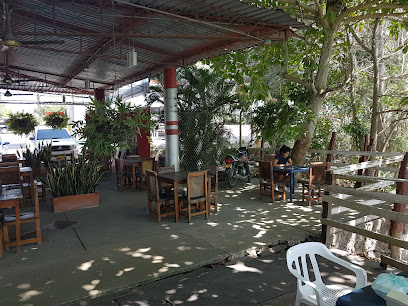
Magros
Explore the flavors of Magros in Sincelejo, where traditional Latino cuisine meets modern dining excellence.

7.3.6
Discover delectable Colombian cuisine at Restaurante 7.3.6 in Sincelejo—where tradition meets taste in a cozy setting.

Basán
Experience authentic Colombian flavors at Basán in Sincelejo – where every meal is a celebration of local cuisine.
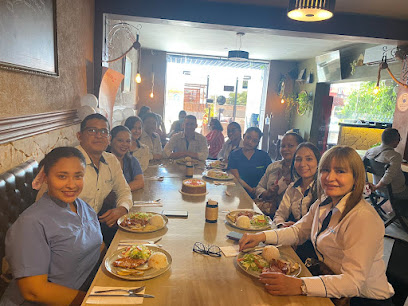
Góndola
Discover Góndola in Sincelejo - where authentic Colombian flavors meet warm hospitality in a charming setting.

Pardo Gastro Bar
Experience culinary excellence at Pardo Gastro Bar in Sincelejo - where traditional Colombian flavors meet modern gastronomy.

Restaurante Yulimar
Experience authentic Colombian cuisine at Restaurante Yulimar in Sincelejo - where every dish tells a story.

Markets, malls and hidden boutiques
Guacarí Parque Comercial
Explore Guacarí Parque Comercial in Sincelejo, a lively shopping hub featuring diverse shops, dining, and entertainment options for all visitors.

VIVA MALL
Discover shopping, dining, and entertainment at VIVA MALL, Sincelejo's premier destination for a vibrant retail experience.

Centro Comercial Viva Exito
Discover the vibrant shopping experience at Centro Comercial Viva Exito, where local culture meets modern retail in Sincelejo.

Gran Central Park V and V Joyeros
Explore Gran Central Park V and V Joyeros in Sincelejo: A vibrant shopping mall with local culture, diverse dining, and family-friendly entertainment.
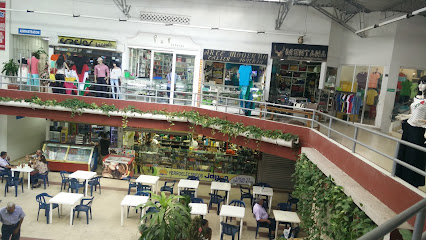
San Francisco Shopping Center
Experience shopping like never before at the San Francisco Shopping Center, Sincelejo's premier retail destination for tourists and locals alike.

Julia Serpa Alta Costura
Explore Julia Serpa Alta Costura in Sincelejo for exquisite, locally crafted dresses that embody elegance and cultural richness.

Bescato
Explore Bescato in Sincelejo for a stylish selection of clothing and accessories that cater to every fashion need.
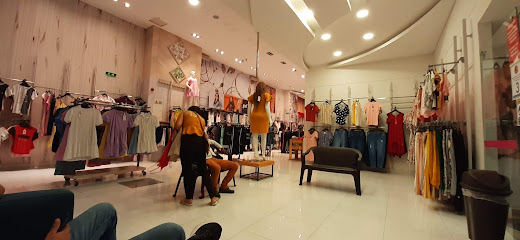
Dulce Sorpresa_ Sincelejo
Discover an enchanting gift shop in Sincelejo, offering unique local crafts, artisanal foods, and vibrant souvenirs that capture Colombia's culture.

Dream's Regalos
Discover unique souvenirs and handmade crafts at Dream's Regalos, the ultimate gift shop in Sincelejo, Colombia.

Valu Sincelejo
Explore Valu Sincelejo: A Local Store in Sucre Offering Unique Products and a Warm Atmosphere for Tourists.
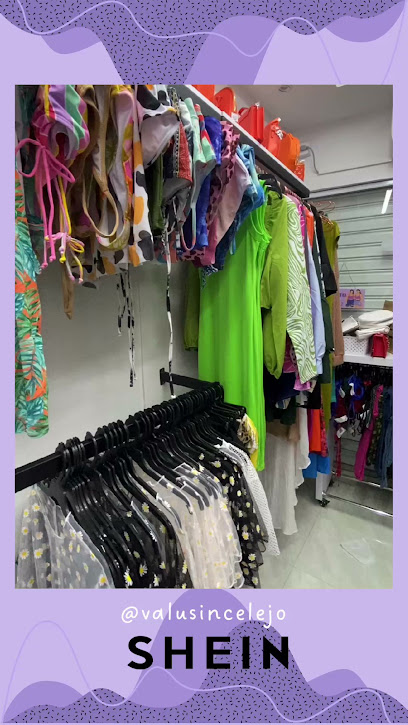
URBAN SHOP SINCELEJO
Discover the unique blend of local artistry and contemporary fashion at Urban Shop Sincelejo, a top clothing destination in Sucre.

DEL ALMA TIENDA.
Discover authentic Colombian gifts at Del Alma Tienda in Sincelejo, a charming shop filled with unique treasures and local crafts.

El paisa
Discover the essence of Colombian craftsmanship at El Paisa, Sincelejo's premier hat shop offering a unique selection of traditional and modern headwear.

Supertienda La Sigarra
Explore the vibrant flavors of Sucre at Supertienda La Sigarra, where local produce and authentic Colombian snacks await every visitor.

Almacén Pare
Discover the latest trends at Almacén Pare, Sincelejo's premier women's clothing boutique, where style meets local culture.

Essential bars & hidden hideouts
Frida
Experience the vibrant nightlife of Sincelejo at Frida, a lively bar offering delicious cocktails and a welcoming atmosphere.
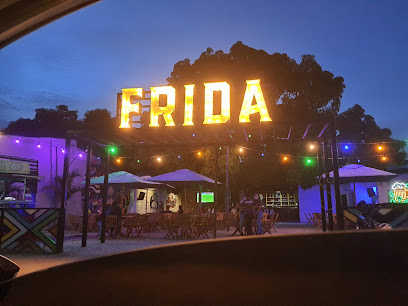
McGregor's Resto Pub
McGregor's Resto Pub: A vibrant pub experience in Sincelejo, blending local flavors with a lively atmosphere for an unforgettable culinary journey.
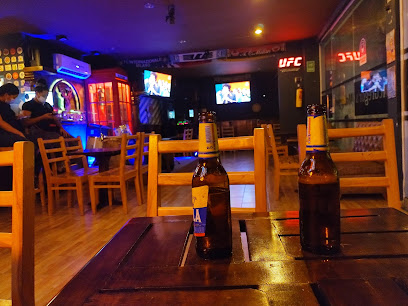
La Cruda rooftop
Discover the vibrant flavors and stunning views at La Cruda Rooftop, a premier grilling destination in the heart of Sincelejo's Zona Rosa.

Tembeleque disco bar
Experience the vibrant nightlife at Tembeleque Disco Bar in Sincelejo, where music, dance, and local culture come together for an unforgettable evening.

Mangata Resto-Bar
Discover the lively atmosphere and delightful drinks at Mangata Resto-Bar in Sincelejo, where locals and tourists gather for unforgettable moments.

THE BOOMKER
Experience the vibrant nightlife of Sincelejo at The Boomker, where delightful drinks and lively atmosphere await you.

Sampui bar
Discover the lively nightlife of Sincelejo at Sampui Bar, a vibrant spot with delicious drinks and a welcoming atmosphere.

Cinema café bar
Experience the perfect blend of cinema and culinary delights at Cinema Café Bar in Sincelejo, where every visit is a celebration of film and flavor.

Rock House Gastro Pub
Experience the vibrant flavors and lively atmosphere at Rock House Gastro Pub, a top destination for food and drink in Sincelejo, Sucre.

Corona Bar Argelia
Discover the vibrant nightlife of Sincelejo at Corona Bar Argelia, where refreshing drinks and lively ambiance await you.

La Fonda Sabanera
Discover the authentic taste of Colombia at La Fonda Sabanera, a grill restaurant in Sincelejo offering local flavors in a vibrant atmosphere.

El Patio Rustiko
Discover El Patio Rustiko, a lively bar in Sincelejo, offering a perfect blend of local flavors and vibrant nightlife for an unforgettable experience.

Umbrella
Discover the vibrant nightlife of Sincelejo at Umbrella, a bar renowned for its lively atmosphere, creative cocktails, and local culture.

Barrilera Drinks and Beers
Experience the vibrant nightlife and local flavors at Barrilera Drinks and Beers in Sincelejo, Colombia.

Cien años Gastro Bar
Experience the vibrant nightlife and local flavors at Cien Años Gastro Bar in Sincelejo, Sucre—a must-visit for all travelers.
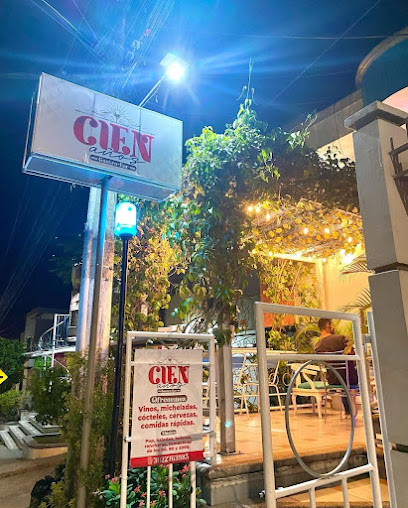
Local Phrases
-
- HelloHola
[o-lah] - GoodbyeAdiós
[ah-dee-ohs] - YesSí
[see] - NoNo
[noh] - Please/You're welcomePor favor/De nada
[por fah-vor/deh nah-dah] - Thank youGracias
[grah-see-ahs] - Excuse me/SorryPerdón
[pehr-dohn] - How are you?¿Cómo estás?
[koh-moh ehs-tahs] - Fine. And you?Bien. ¿Y tú?
[byen. ee too] - Do you speak English?¿Hablas inglés?
[ah-blahs een-glehs] - I don't understandNo entiendo
[noh ehn-tyen-doh]
- HelloHola
-
- I'd like to see the menu, pleaseMe gustaría ver el menú, por favor
[meh goos-tah-ree-ah vehr ehl meh-noo, por fah-vor] - I don't eat meatNo como carne
[noh koh-moh kahr-neh] - Cheers!¡Salud!
[sah-lood] - I would like to pay, pleaseMe gustaría pagar, por favor
[meh goos-tah-ree-ah pah-gar, por fah-vor]
- I'd like to see the menu, pleaseMe gustaría ver el menú, por favor
-
- Help!¡Ayuda!
[ah-yoo-dah] - Go away!¡Vete!
[veh-teh] - Call the Police!¡Llama a la policía!
[yah-mah ah lah poh-lee-see-ah] - Call a doctor!¡Llama a un médico!
[yah-mah ah oon meh-dee-koh] - I'm lostEstoy perdido
[ehs-toy pehr-dee-doh] - I'm illEstoy enfermo
[ehs-toy ehn-fehr-moh]
- Help!¡Ayuda!
-
- I'd like to buy...Me gustaría comprar...
[meh goos-tah-ree-ah kohm-prar] - I'm just lookingSolo estoy mirando
[soh-loh ehs-toy mee-rahn-doh] - How much is it?¿Cuánto cuesta?
[kwan-to kwehs-tah] - That's too expensiveEsto es demasiado caro
[ehs-toh ehs deh-mah-syah-doh kah-roh] - Can you lower the price?¿Puedes bajar el precio?
[pweh-dehs bah-har ehl pree-syoh]
- I'd like to buy...Me gustaría comprar...
-
- What time is it?¿Qué hora es?
[keh oh-rah ehs] - It's one o'clockEs la una
[ehs lah oo-nah] - Half past (10)Las diez y media
[lahs dyehs ee meh-dee-ah] - MorningMañana
[mah-nyah-nah] - AfternoonTarde
[tahr-deh] - EveningNoche
[noh-cheh] - YesterdayAyer
[ah-yehr] - TodayHoy
[oy] - TomorrowMañana
[mah-nyah-nah] - 1Uno
[oo-noh] - 2Dos
[dohs] - 3Tres
[trehs] - 4Cuatro
[kwah-troh] - 5Cinco
[seen-koh] - 6Seis
[seys] - 7Siete
[syeh-teh] - 8Ocho
[oh-choh] - 9Nueve
[nweh-veh] - 10Diez
[dyehs]
- What time is it?¿Qué hora es?
-
- Where's a/the...?¿Dónde está...?
[dohn-deh ehs-tah] - What's the address?¿Cuál es la dirección?
[kwal ehs lah dee-rehk-syon] - Can you show me (on the map)?¿Puedes mostrarme (en el mapa)?
[pweh-dehs mohs-trar-meh (ehn ehl mah-pah)] - When's the next (bus)?¿Cuándo es el próximo (autobús)?
[kwan-doh ehs ehl proh-shee-moh (ow-toh-boos)] - A ticket (to ....)Un boleto (a ...)
[oon boh-leh-toh (ah)]
- Where's a/the...?¿Dónde está...?
History of Sincelejo
-
Before the arrival of the Spanish, the area now known as Sincelejo was inhabited by the indigenous Zenú people. The Zenú were known for their advanced irrigation systems and skilled craftsmanship, particularly in goldwork and pottery. Evidence of their presence can still be found in archaeological sites in and around Sincelejo.
-
Sincelejo was founded on October 4, 1535, by Spanish conquistadors. During the colonial period, the town became a significant center for agricultural activities, especially cattle ranching and sugar cane production. The Spanish influence is evident in the city's architecture, with several colonial-era buildings still standing today.
-
In 1812, the Battle of Sincelejo took place during Colombia's struggle for independence from Spain. The battle was a pivotal moment in the region's history, marking the local population's active participation in the fight for freedom. Monuments and plaques in the city commemorate this significant event.
-
Following Colombia's independence, Sincelejo experienced substantial growth and development. The city became a focal point for commerce and trade in the region. The introduction of new agricultural techniques and the expansion of transportation networks contributed to its prosperity.
-
Sincelejo is renowned for its rich cultural heritage, particularly its vibrant music and dance traditions. The city is the birthplace of the 'Fandango,' a lively folk dance that is a vital part of local festivals and celebrations. Sincelejo also hosts the annual 'Fiestas del 20 de Enero,' a significant cultural event featuring parades, music, and traditional dances.
-
In the modern era, Sincelejo has continued to grow, becoming an essential urban center in the Caribbean region of Colombia. The city boasts a mix of historical landmarks and modern amenities, making it a captivating destination for visitors. Significant infrastructural developments have further enhanced its role as a regional hub.
-
Today, Sincelejo's economy is diverse, with agriculture, livestock, and commerce playing crucial roles. The city's markets are vibrant places where one can find a variety of local products, from fresh produce to artisanal crafts. Sincelejo is also known for its leather goods, a testament to its long-standing tradition in cattle ranching.
Sincelejo Essentials
-
Sincelejo is located in the Sucre Department of Colombia. The nearest major airport is Los Garzones Airport (MTR) in Montería, approximately 90 kilometers away. From Montería, you can take a bus or a taxi to Sincelejo, which takes around 1.5 to 2 hours. Alternatively, you can fly into Rafael Núñez International Airport (CTG) in Cartagena and then take a bus or taxi to Sincelejo, which is about a 3 to 4-hour drive.
-
Sincelejo offers a variety of transportation options. Local buses and taxis are readily available and are a convenient way to get around the city. For a more personal experience, you can rent a car from one of the local rental agencies. Mototaxis (motorcycle taxis) are also a popular and inexpensive way to navigate through the city, especially for short distances.
-
The official currency in Colombia is the Colombian Peso (COP). Credit and debit cards are widely accepted in hotels, restaurants, and larger stores in Sincelejo. However, it is advisable to carry some cash, especially for smaller purchases or when visiting rural areas. ATMs are readily available in the city, but always use those located in safe and well-lit areas.
-
While Sincelejo is generally safe for tourists, it is important to exercise caution. Avoid walking alone at night, especially in unfamiliar areas. Neighborhoods like La Ford and La Esperanza have higher crime rates, so it is best to avoid these areas after dark. Always keep an eye on your belongings, particularly in crowded places such as markets and bus stations.
-
In case of an emergency, dial 123 for immediate assistance. Sincelejo has several hospitals and clinics that provide medical care. It is advisable to have travel insurance that covers medical emergencies. For minor health issues, there are many pharmacies throughout the city where you can purchase over-the-counter medications.
-
Fashion: Do dress modestly, especially when visiting religious sites. Avoid wearing overly revealing clothing. Religion: Do respect local customs and traditions. It is customary to dress conservatively and behave respectfully in churches. Public Transport: Do be respectful and offer your seat to elderly passengers. Don't eat or drink on public transport. Greetings: Do greet people with a handshake. A friendly 'buenos días' or 'buenas tardes' is appreciated. Eating & Drinking: Do try local dishes like mote de queso and butifarra. Don't refuse food or drink offerings as it can be considered impolite.
-
To experience Sincelejo like a local, visit the lively Galeras Market where you can find fresh produce and local delicacies. Engage with the locals; they are friendly and often willing to share stories about their culture and history. Don't miss the Corralejas festivals, which are a significant part of Sincelejo's cultural heritage. For a unique experience, take a day trip to the nearby Morrosquillo Gulf to enjoy beautiful beaches and fresh seafood.
Trending Landmark in Sincelejo
-
Guacarí Parque Comercial
-
Plaza de Majagual
-
Santander Park
-
St. Francis of Asis Cathedral
-
Hotel Arawak Plaza
-
Teatro Municipal
-
Monumento La iguana
-
Monumento a las Vacas
-
Paintball sincelejo
-
Monumento a la Flor del Bonche
-
Museum Manuel Huertas
-
Sincelejo-Sucre
-
Galeria de Arte Walther Arrubla
-
Ciudad del Encuentro
-
Sincelejo Sucre colombia
Nearby Cities to Sincelejo
-
Things To Do in Cartagena
-
Things To Do in Barranquilla
-
Things To Do in Santa Marta
-
Things To Do in Medellín
-
Things To Do in Cúcuta
-
Things To Do in Riohacha
-
Things To Do in San Blas Islands
-
Things To Do in Panama City
-
Things To Do in Portobelo
-
Things To Do in Manizales
-
Things To Do in Tunja
-
Things To Do in Colon
-
Things To Do in Pereira
-
Things To Do in Bogotá
-
Things To Do in Armenia





